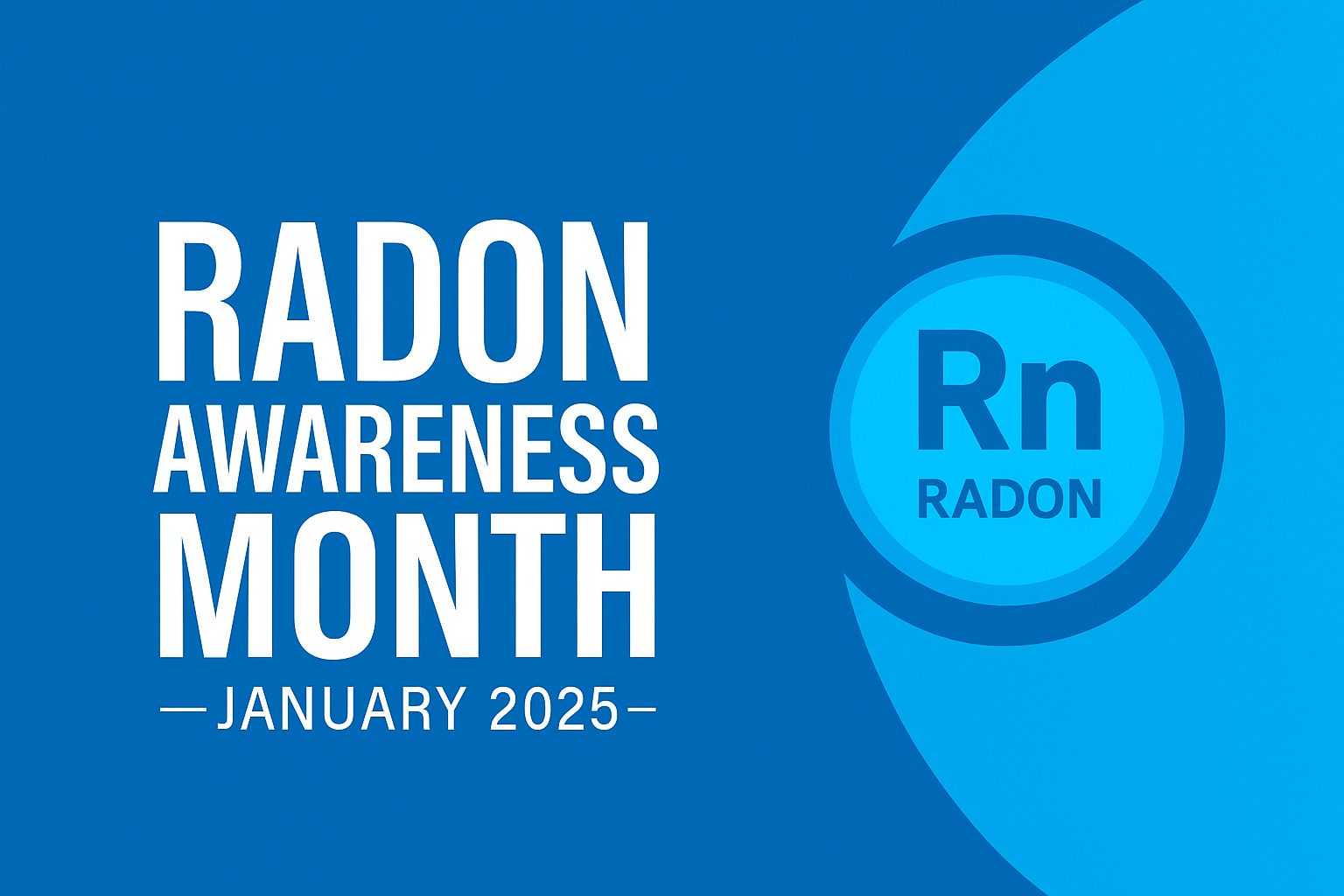Radon Awareness Month 2025: Invisible Risks, Visible Leadership

- Posted by Greg Wahlstrom, MBA, HCM
- Posted in Health Observance Calendar
How Healthcare Executives Can Protect Communities from the Second Leading Cause of Lung Cancer
Published: January 6, 2025
Radon gas may be odorless and invisible, but its impact is far from negligible. Each January, Radon Awareness Month draws attention to a critical yet under-addressed public health hazard. According to the EPA, radon exposure is the second leading cause of lung cancer in the United States, responsible for over 21,000 deaths annually. For hospital executives, this month is not only about education—it’s about strategic risk mitigation, facilities management, and community trust.
At the operational level, radon risk begins at home—literally. Healthcare facilities must test, monitor, and remediate radon exposure within their own walls, particularly in lower-level treatment or storage areas. Froedtert Health in Wisconsin recently conducted a system-wide radon audit across its facilities and made structural improvements based on those findings. For hospital COOs and facilities executives, radon management is a tangible expression of environmental safety leadership. Consequently, awareness must evolve into action.
Community outreach also an essential component. Many high-risk populations—including rural residents and low-income families—lack the resources or awareness to test their homes. That’s why leaders at Truman Medical Centers in Kansas City partnered with local housing agencies to distribute radon test kits during wellness fairs. Hospital-based community benefit programs should incorporate radon outreach into Q1 engagement strategies. Public health isn’t just episodic; it’s environmental.
Radon’s threat also intersects with health equity. According to the Chronic Disease Coalition, underserved communities are disproportionately affected due to housing disparities and outdated construction. This makes radon both a medical and social determinant. Executive leaders committed to transformational hospital leadership must incorporate environmental justice into strategic plans and capital improvement discussions.
Prevention, as always, is cost-effective. In a 2024 report from the CDC, hospitals that invested in radon mitigation in patient areas reported fewer respiratory-related ER visits in high-risk zip codes. Leaders at St. Luke’s Boise implemented home screening follow-up protocols via their primary care clinics, driving down local hospitalization rates. The business case for radon prevention is compelling—and aligns with value-based care objectives. Prevention starts with environmental vigilance.
Digital tools can enhance these efforts. Radon mapping dashboards integrated into population health platforms can help identify hotspots and track mitigation progress. Executives overseeing digital transformation should consider how GIS-linked data sets support community outreach and environmental health tracking. When leveraged properly, data becomes a strategic asset—not just a compliance tool.
Facility resilience is another dimension. As climate patterns shift, new zones may become radon-prone. Emergency preparedness and sustainability teams must work together to conduct regular radon risk re-evaluations. Leading systems like Ochsner Health now include radon surveillance as part of their environmental health and safety audits. For hospitals seeking Joint Commission accreditation or LEED certification, radon metrics are no longer optional—they’re essential.
January is also the perfect time to launch staff education. HR and clinical education departments should issue radon factsheets and CME materials through intranet portals. At UMass Memorial Health, awareness campaigns are paired with staff-led home testing incentives. Executive support for workforce education drives cultural ownership of public health priorities. When staff are informed, communities benefit.
Radon Awareness Month offers executives a rare chance to align infrastructure, outreach, and equity. As with other invisible risks, the cost of inaction is measured in lives—not just liabilities. This January, the most powerful leadership tool is a test kit. Strategic oversight starts beneath our feet—and ends with healthier air for all.
Is your system proactively addressing radon exposure? Align your 2025 population health and facilities strategy with this silent but significant public health threat. Make environmental vigilance a leadership priority—because safety starts with the unseen.
Discover More on Environmental Strategy
Explore how smart executive decisions around workplace health, risk mitigation, and facility design are driving meaningful improvements in healthcare operations. Our blog on hospital workforce transformation offers strategic insight into reimagining health systems from the inside out.
Internal Links
- Hospital Leadership in Crisis: What Every CEO Must Do in 2025
- The Healthcare Workforce Crisis: Executive Solutions That Actually Work



